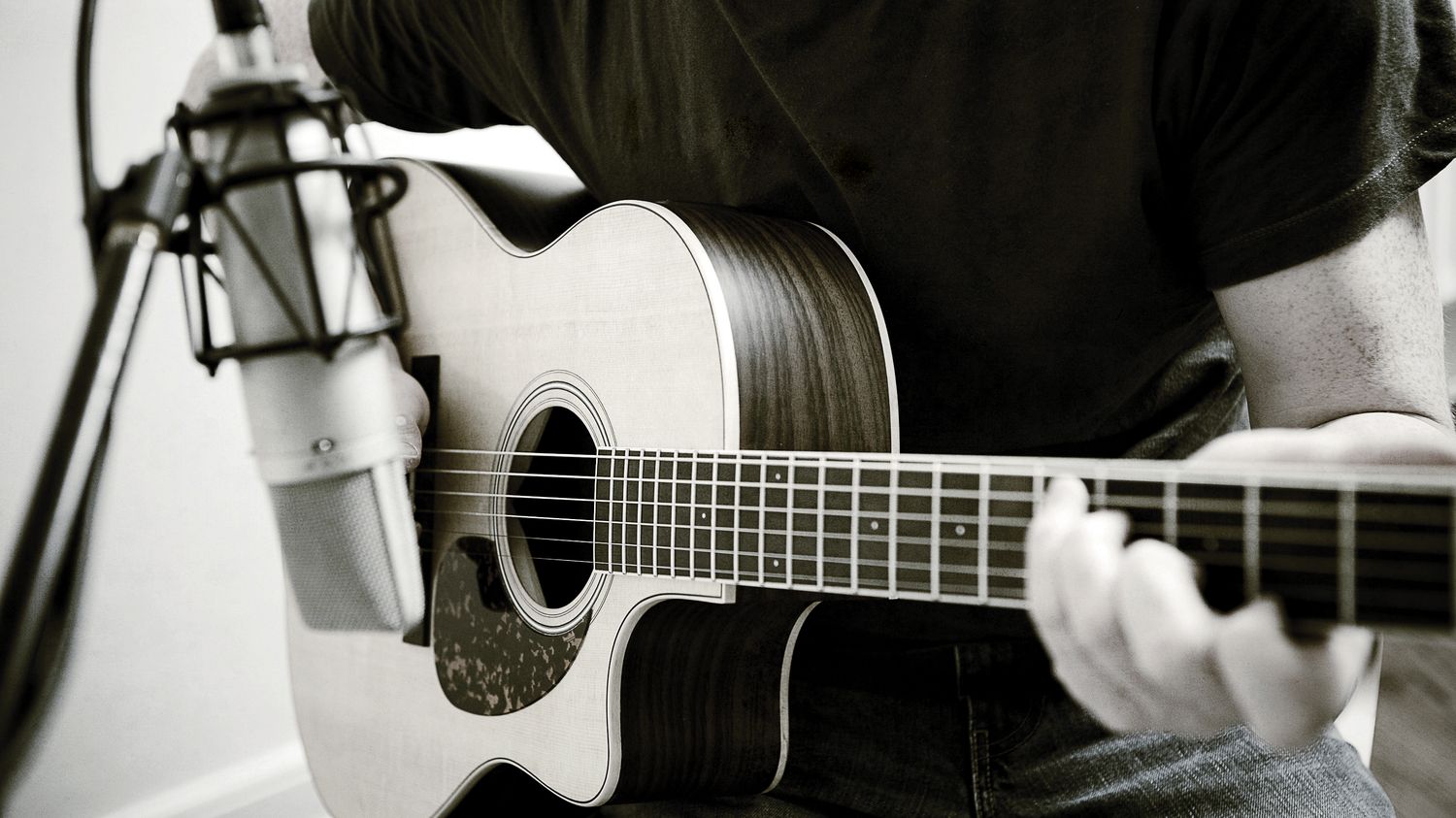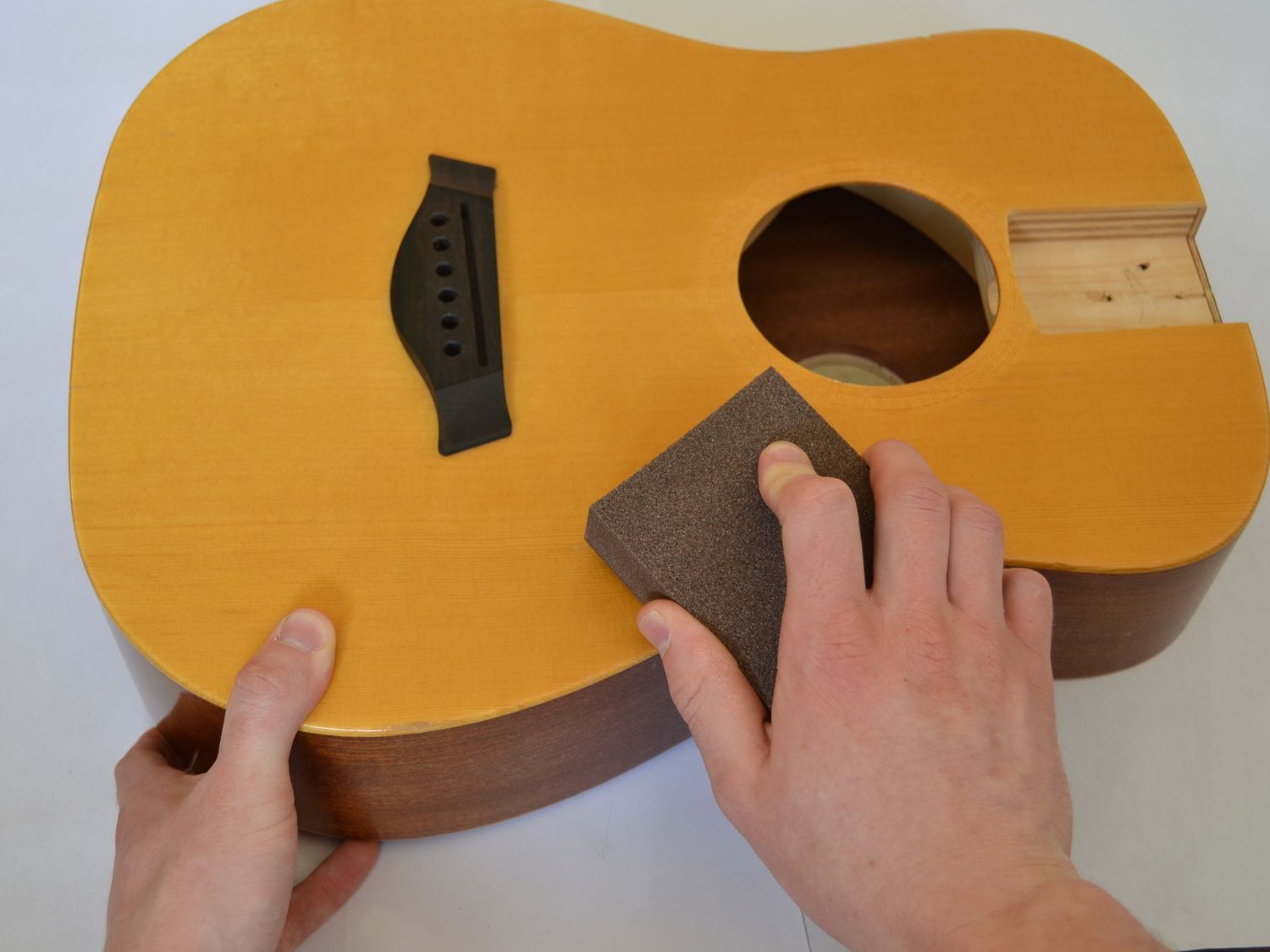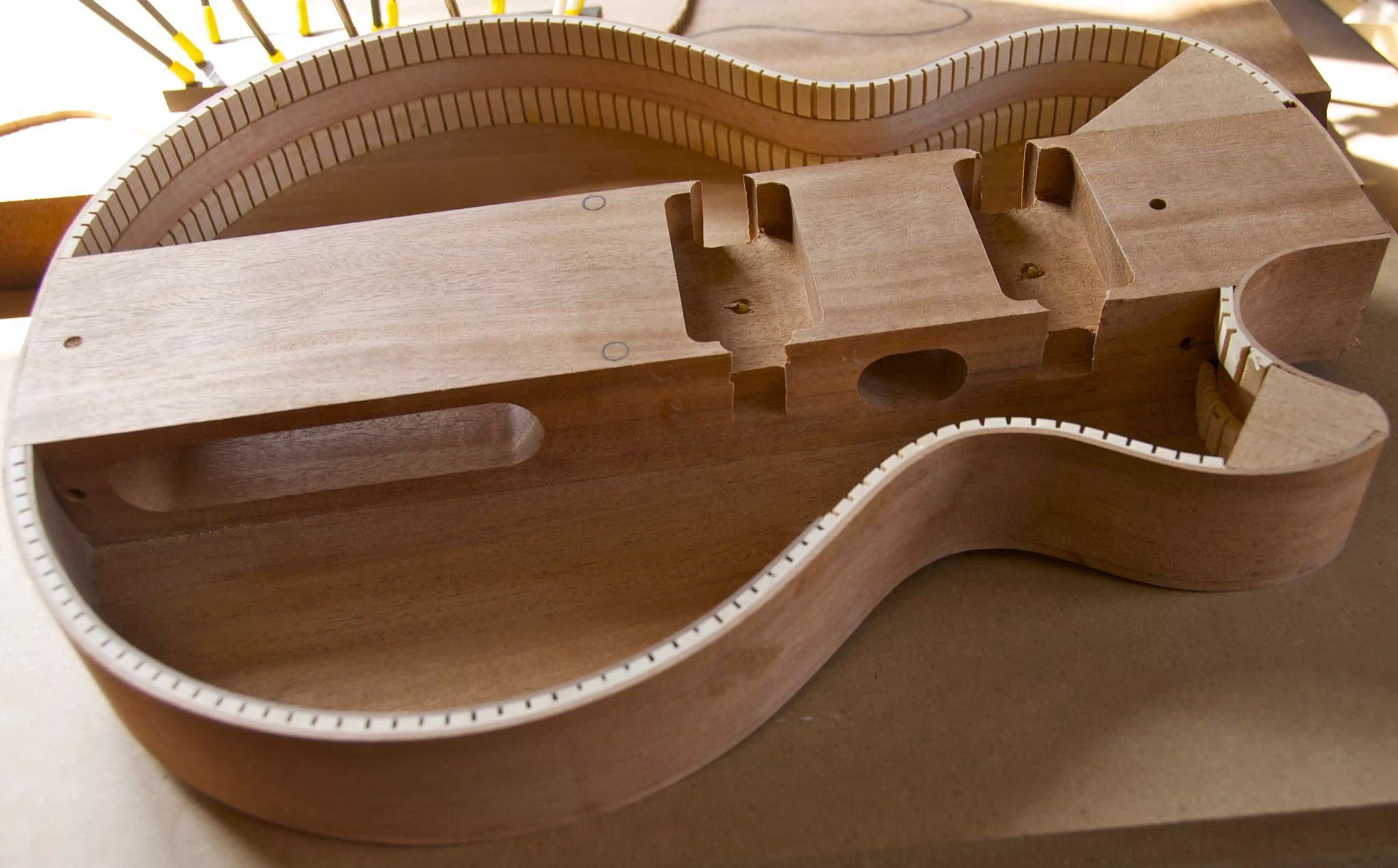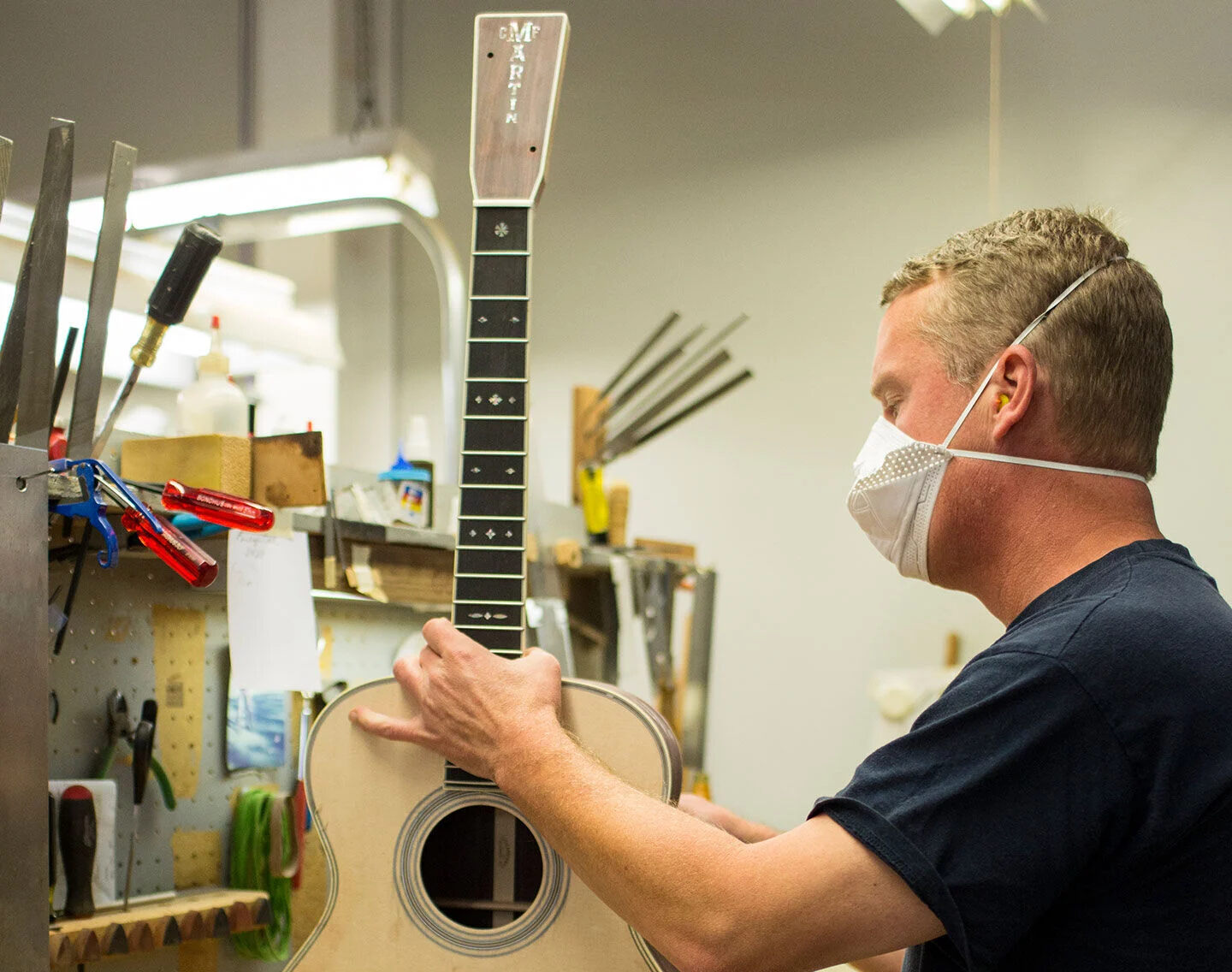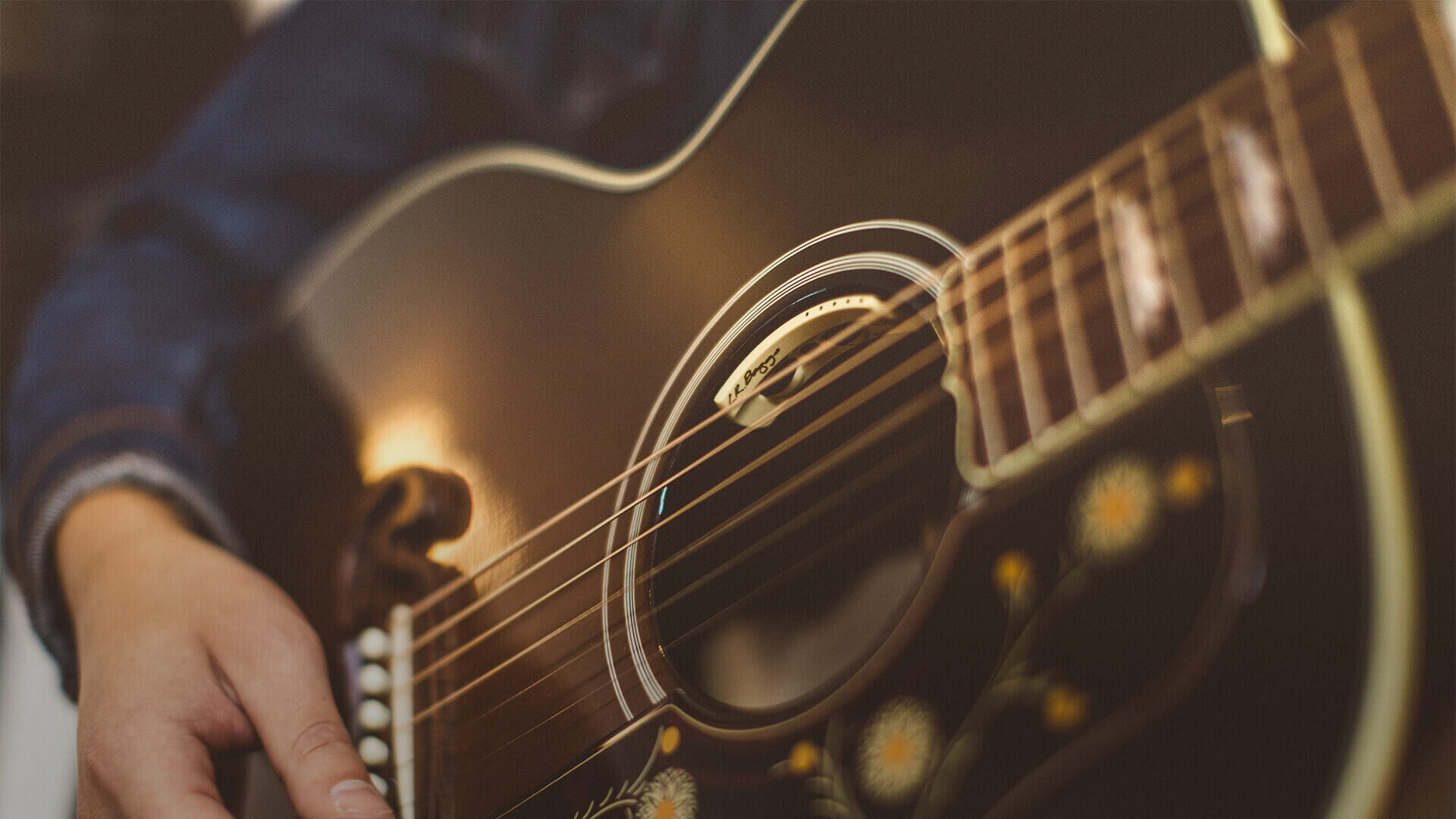Home>Production & Technology>Acoustic>How To Amplify An Acoustic Guitar
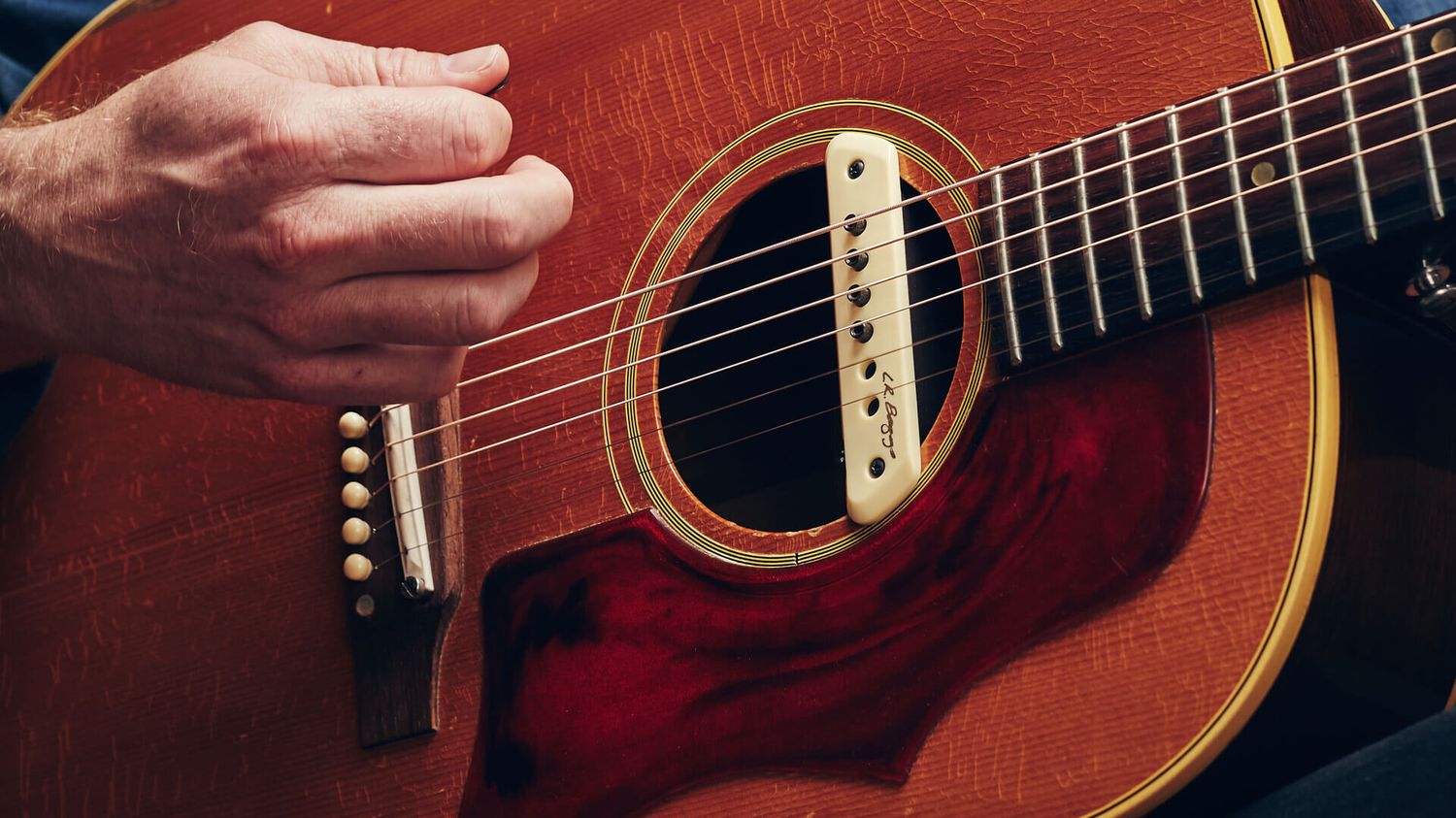

Acoustic
How To Amplify An Acoustic Guitar
Published: March 12, 2024
Learn how to amplify your acoustic guitar for a richer sound. Discover essential tips and techniques for enhancing your acoustic performance. Amplify your music today!
(Many of the links in this article redirect to a specific reviewed product. Your purchase of these products through affiliate links helps to generate commission for AudioLover.com, at no extra cost. Learn more)
Table of Contents
Introduction
Amplifying an acoustic guitar is a transformative process that allows the instrument's natural sound to reach a larger audience. Whether you're a seasoned performer or a beginner looking to share your music, understanding the various methods of amplification can significantly enhance your acoustic guitar experience.
Amplifying an acoustic guitar involves using technology to capture and project the instrument's unique tonal qualities. This process enables the guitar's sound to be heard clearly in a variety of settings, from intimate coffeehouse performances to large concert venues. By amplifying your acoustic guitar, you can ensure that every subtle nuance and intricate melody reaches your audience with clarity and precision.
In this comprehensive guide, we will explore the different techniques and equipment used to amplify an acoustic guitar. From choosing the right pickup to utilizing effects pedals, we will delve into the intricacies of each method, providing you with the knowledge and insight to make informed decisions about amplifying your acoustic guitar.
Whether you're a solo artist, a member of a band, or simply enjoy playing for friends and family, understanding how to amplify your acoustic guitar can elevate your musical expression to new heights. So, let's embark on this sonic journey together, as we uncover the art and science of amplifying the soulful sound of the acoustic guitar.
Choosing the Right Pickup
When it comes to amplifying an acoustic guitar, selecting the right pickup is crucial in capturing the instrument's natural tone and projecting it effectively. A pickup serves as the primary tool for converting the acoustic sound waves into electrical signals, which can then be amplified through speakers or sound systems. With a wide array of pickup options available, it's essential to understand the different types and their impact on the guitar's sound.
Types of Pickups
1. Soundhole Pickups
Soundhole pickups are among the most popular choices for acoustic guitars. These pickups are placed directly into the soundhole, capturing the vibrations of the strings. They are relatively easy to install and can provide a balanced representation of the guitar's tonal characteristics. Soundhole pickups are versatile and suitable for various playing styles, making them a preferred option for many acoustic guitarists.
2. Undersaddle Pickups
Undersaddle pickups are discreetly positioned beneath the guitar's saddle, allowing them to pick up the vibrations directly from the strings. This placement enables undersaddle pickups to capture the nuances of the guitar's individual strings, resulting in a clear and articulate sound. These pickups are favored for their ability to produce a natural, uncolored tone, making them an excellent choice for acoustic purists.
3. Soundboard Transducer Pickups
Soundboard transducer pickups are designed to adhere to the guitar's soundboard, capturing the instrument's vibrations across its entire surface. This type of pickup excels in reproducing the guitar's resonance and harmonics, delivering a rich and full-bodied sound. Soundboard transducer pickups are prized for their ability to convey the acoustic guitar's natural warmth and depth, making them a popular option for those seeking a lush, organic sound.
Considerations for Choosing
When selecting a pickup for your acoustic guitar, it's essential to consider factors such as tonal preferences, playing style, and practicality. Each type of pickup offers distinct tonal characteristics and installation requirements, so it's crucial to align your choice with your musical goals and performance needs. Additionally, consulting with experienced musicians or seeking guidance from professional luthiers can provide valuable insights into the most suitable pickup for your specific acoustic guitar.
By carefully evaluating the sonic attributes and practical aspects of different pickups, you can make an informed decision that enhances the natural beauty of your acoustic guitar's sound. Ultimately, choosing the right pickup is a personalized process that revolves around capturing the essence of your instrument and projecting it with authenticity and clarity.
Installing a Pickup
Installing a pickup on an acoustic guitar is a pivotal step in the amplification process, as it directly influences the instrument's sound projection and tonal characteristics. While the installation procedure may vary depending on the type of pickup chosen, there are general guidelines to ensure a seamless and effective installation.
Preparing the Guitar
Before installing a pickup, it's essential to prepare the acoustic guitar to accommodate the new hardware. This involves assessing the guitar's internal structure and making any necessary adjustments to facilitate the pickup installation. In some cases, professional luthiers or guitar technicians may be consulted to ensure the proper preparation of the instrument.
Positioning the Pickup
The precise positioning of the pickup significantly impacts the sound quality and overall performance of the acoustic guitar. Depending on the type of pickup selected, careful consideration should be given to its placement to capture the instrument's unique tonal nuances. Whether it's a soundhole pickup, undersaddle pickup, or soundboard transducer pickup, the correct positioning is critical to achieving optimal sound reproduction.
Ensuring Secure Attachment
Once the pickup is positioned correctly, ensuring its secure attachment to the guitar is paramount. This involves carefully affixing the pickup to the designated area, whether it's the soundhole, beneath the saddle, or on the soundboard. Attention to detail during this stage is crucial to prevent any unwanted movement or interference that could compromise the pickup's performance.
Connecting the Wiring
After the physical installation of the pickup, connecting the wiring is the next crucial step. This involves carefully routing the pickup's cables to the guitar's output jack or preamp, ensuring a secure and tidy connection. Proper cable management is essential to prevent any signal interference or potential damage to the pickup's wiring over time.
Testing and Adjustment
Once the pickup is installed and connected, thorough testing and adjustment are necessary to ensure its functionality and sonic integrity. This may involve checking for any potential feedback, adjusting the pickup's output levels, and fine-tuning the overall sound to achieve the desired tonal balance.
By following these steps and potentially seeking assistance from experienced professionals, the installation of a pickup on an acoustic guitar can be executed with precision and care, ultimately enhancing the instrument's ability to deliver its natural sound to a broader audience.
Using a Microphone
Utilizing a microphone to amplify an acoustic guitar is a classic and revered method that captures the instrument's organic sound with unparalleled authenticity. When employing a microphone for amplification, the goal is to faithfully reproduce the guitar's tonal nuances and acoustic resonance while maintaining a natural and unaltered sonic profile.
Types of Microphones
There are various types of microphones suitable for capturing the sound of an acoustic guitar, each with its unique characteristics and applications. Condenser microphones, known for their sensitivity and ability to capture intricate details, are commonly favored for acoustic guitar amplification. Their transparent and high-fidelity sound reproduction makes them ideal for capturing the instrument's rich harmonics and dynamic range.
Dynamic microphones, renowned for their robustness and ability to handle high sound pressure levels, are also utilized for amplifying acoustic guitars, particularly in live performance settings. While dynamic microphones may not offer the same level of detail as condenser microphones, they excel in capturing the guitar's punchy and assertive qualities, making them suitable for energetic performances.
Microphone Placement
The placement of the microphone plays a pivotal role in capturing the acoustic guitar's sound accurately. When positioning a microphone for amplification, factors such as distance, angle, and proximity to the sound source must be carefully considered to achieve optimal results.
Placing the microphone near the guitar's soundhole can emphasize the instrument's low-end warmth and resonance, while positioning it closer to the fretboard can capture the guitar's sparkling highs and intricate fingerstyle nuances. Experimenting with different microphone placements allows for the exploration of diverse tonal characteristics, enabling musicians to tailor the amplified sound to their preferences and performance requirements.
Considerations for Live Performances
In live performance scenarios, using a microphone to amplify an acoustic guitar offers a sense of intimacy and naturalness, creating an immersive sonic experience for both the performer and the audience. However, it's essential to address potential challenges such as feedback and ambient noise when employing microphones in live settings.
Strategic placement of the microphone, soundcheck rehearsals, and effective monitoring systems are crucial in mitigating feedback and ensuring a balanced and controlled sound reinforcement. Additionally, utilizing microphone techniques such as cardioid or hypercardioid polar patterns can aid in minimizing unwanted noise and focusing on the guitar's primary sound source.
Capturing the Essence of the Acoustic Guitar
Using a microphone to amplify an acoustic guitar is a timeless approach that celebrates the instrument's natural sound and sonic intricacies. Whether in a studio recording environment or a live performance setting, the art of capturing the acoustic guitar's essence through a microphone embodies a commitment to authenticity and sonic purity, allowing the instrument's soulful voice to resonate with clarity and grace.
Using an Acoustic Guitar Amplifier
Amplifying an acoustic guitar through a dedicated acoustic guitar amplifier is a fundamental aspect of projecting the instrument's natural sound with clarity and precision. Unlike electric guitar amplifiers, which are designed to color and distort the guitar's signal, acoustic guitar amplifiers are engineered to faithfully reproduce the instrument's tonal nuances while maintaining a transparent and uncolored sonic profile.
Acoustic Amplifier Features
Acoustic guitar amplifiers are equipped with specialized features tailored to enhance the sonic characteristics of acoustic instruments. These amplifiers often include dedicated input channels designed to accommodate various pickup types, such as soundhole pickups, undersaddle pickups, and soundboard transducer pickups. Additionally, many acoustic amplifiers incorporate built-in preamps, EQ controls, and effects such as reverb and chorus, allowing musicians to sculpt and refine their amplified sound to suit different performance environments and musical styles.
Natural Sound Reproduction
The primary objective of an acoustic guitar amplifier is to faithfully reproduce the instrument's natural sound while providing ample volume and projection. By leveraging advanced speaker and amplifier technologies, acoustic amplifiers can deliver a pristine and articulate representation of the acoustic guitar's tonal nuances, ensuring that every subtle detail and harmonic richness is conveyed with clarity and authenticity.
Versatility and Portability
Acoustic guitar amplifiers are designed to accommodate a wide range of performance scenarios, from intimate acoustic sessions to larger venues and outdoor settings. Many modern acoustic amplifiers feature compact and lightweight designs, making them highly portable and convenient for musicians on the go. The versatility of acoustic amplifiers allows for seamless integration into diverse musical contexts, providing reliable and consistent amplification for acoustic guitars in various performance settings.
Feedback Control and Sound Optimization
One of the critical challenges in amplifying acoustic guitars is managing potential feedback and optimizing the amplified sound for optimal clarity and balance. Acoustic guitar amplifiers often incorporate feedback suppression technologies and phase controls to mitigate unwanted feedback and ensure stable performance at higher volume levels. Additionally, the inclusion of comprehensive EQ controls enables musicians to tailor the amplifier's output to suit the acoustic guitar's tonal characteristics and the acoustics of the performance space.
Embracing the Acoustic Guitar's Voice
Using an acoustic guitar amplifier is not merely about increasing volume; it's about embracing and enhancing the inherent voice of the acoustic guitar. Whether in a studio recording session, a small coffeehouse performance, or a large concert stage, the acoustic guitar amplifier serves as a faithful conduit for projecting the instrument's soulful resonance and expressive dynamics, allowing musicians to share their music with authenticity and impact.
Using Effects Pedals
Integrating effects pedals into the amplification chain of an acoustic guitar opens up a realm of sonic possibilities, allowing musicians to sculpt and expand the instrument's tonal palette with creativity and artistry. While effects pedals are often associated with electric guitars, their application in the acoustic realm offers a captivating avenue for sonic exploration and expression.
Expanding Tonal Versatility
Effects pedals empower acoustic guitarists to transcend traditional sonic boundaries, introducing elements of ambiance, modulation, and spatial enhancement to their sound. Reverb pedals, for instance, infuse the acoustic guitar's resonance with lush spatial reflections, creating an immersive sonic environment that adds depth and dimension to the instrument's natural voice. Similarly, chorus and delay pedals introduce captivating textures and rhythmic embellishments, enriching the acoustic guitar's timbre with ethereal nuances and expressive trails.
Creative Sound Shaping
The utilization of effects pedals enables acoustic guitarists to engage in innovative sound shaping, allowing for the manipulation of dynamics and tonal characteristics. Compression pedals, for example, provide a means to refine the instrument's dynamic range, ensuring consistent volume levels and enhancing sustain. This can be particularly beneficial in live performance settings, where the acoustic guitar's projection and articulation are crucial for captivating the audience.
Amplifying Artistic Expression
By incorporating effects pedals, acoustic guitarists can amplify their artistic expression, infusing their music with evocative textures and evoking emotive landscapes. From subtle modulation to immersive ambient swells, effects pedals serve as a conduit for translating the guitarist's creative vision into a captivating sonic narrative. Whether conveying introspective ballads or crafting expansive soundscapes, the use of effects pedals elevates the acoustic guitar's expressive potential, transcending conventional sonic boundaries.
Considerations for Pedal Selection
When integrating effects pedals into the amplification chain of an acoustic guitar, it's essential to consider the compatibility and sonic synergy between the pedals and the instrument. Selecting pedals that complement the acoustic guitar's natural tonal characteristics and enhance its sonic versatility is paramount. Additionally, exploring pedal combinations and signal routing can yield unique sonic textures, allowing for personalized sonic explorations and artistic discoveries.
Embracing Sonic Innovation
The integration of effects pedals into the amplification of acoustic guitars represents a celebration of sonic innovation and artistic exploration. By embracing the creative potential of effects pedals, acoustic guitarists can transcend traditional sonic conventions, unlocking a world of expressive possibilities and reshaping the sonic landscape of the acoustic realm.
Incorporating effects pedals into the amplification of acoustic guitars represents a celebration of sonic innovation and artistic exploration, allowing musicians to transcend traditional sonic boundaries and unlock a world of expressive possibilities.
Tips for Getting the Best Sound
-
Experiment with Pickup Placement: When using a pickup to amplify your acoustic guitar, explore different placement options to find the sweet spot that captures the instrument's unique tonal qualities. Small adjustments can make a significant difference in the sound produced, so take the time to fine-tune the pickup's position for optimal results.
-
Utilize EQ Controls: Whether through an amplifier or a dedicated preamp, leveraging the EQ controls allows you to tailor the amplified sound to suit the acoustic guitar's tonal characteristics and the acoustics of the performance space. Adjusting the bass, midrange, and treble frequencies can help achieve a balanced and nuanced sound.
-
Manage Feedback: In live performance settings, managing feedback is crucial for a seamless and controlled sound reinforcement. Positioning the amplifier appropriately, using soundhole covers, and employing feedback suppression technologies can help mitigate unwanted feedback and ensure a stable and clear sound.
-
Explore Mic Placement: If using a microphone for amplification, experiment with different mic placements to capture the acoustic guitar's nuances. Positioning the microphone near the soundhole, fretboard, or a combination of both can yield diverse tonal characteristics, allowing you to tailor the amplified sound to your preferences.
-
Consider Room Acoustics: Be mindful of the acoustic properties of the performance space. Understanding the room's acoustics and making adjustments to accommodate its unique characteristics can significantly impact the amplified sound. Utilize sound reflections and room resonance to enhance the overall sonic experience.
-
Regular Maintenance: Keep your acoustic guitar in optimal playing condition. Regularly changing the strings, ensuring proper neck alignment, and addressing any structural issues can contribute to a more vibrant and resonant sound when amplified.
-
Engage with Sound Engineers: In professional settings, collaborating with experienced sound engineers can provide valuable insights and technical expertise. Sound engineers can offer guidance on optimizing the amplified sound, addressing technical challenges, and ensuring a seamless integration of the acoustic guitar into the overall sound mix.
-
Embrace Dynamic Playing: Explore the dynamic range of your acoustic guitar playing. Varying your playing intensity, utilizing fingerstyle techniques, and experimenting with percussive elements can add depth and expressiveness to the amplified sound, creating a captivating sonic performance.
By implementing these tips and embracing a spirit of sonic exploration, you can elevate the amplified sound of your acoustic guitar, ensuring that every note resonates with clarity, richness, and authenticity.

